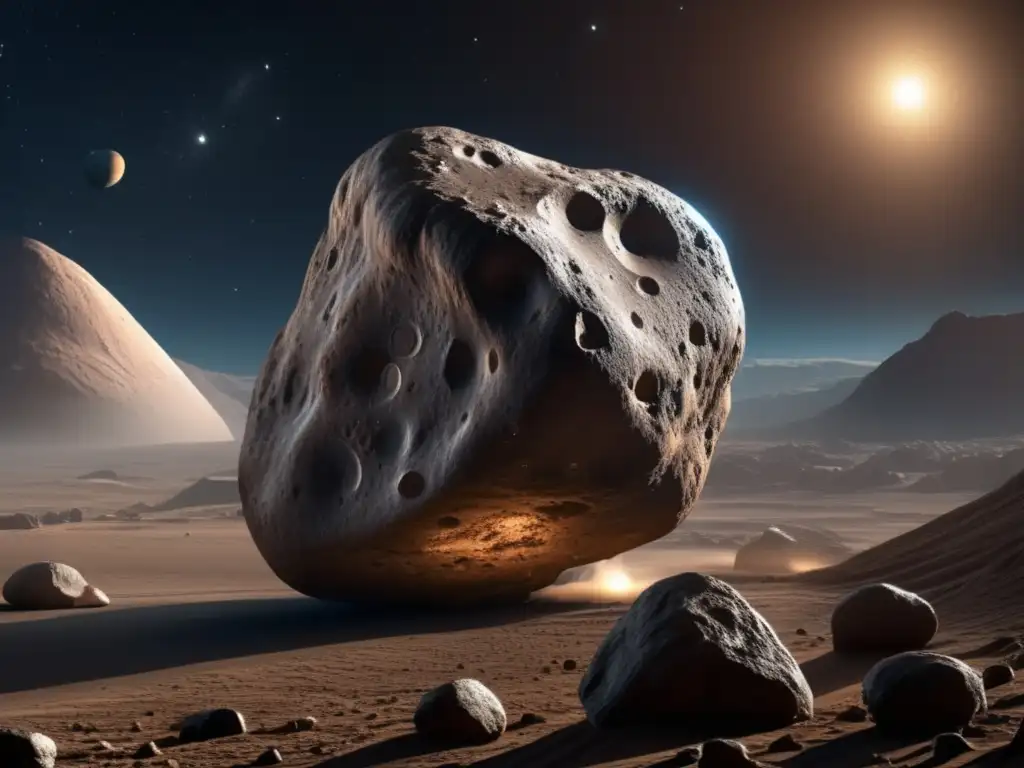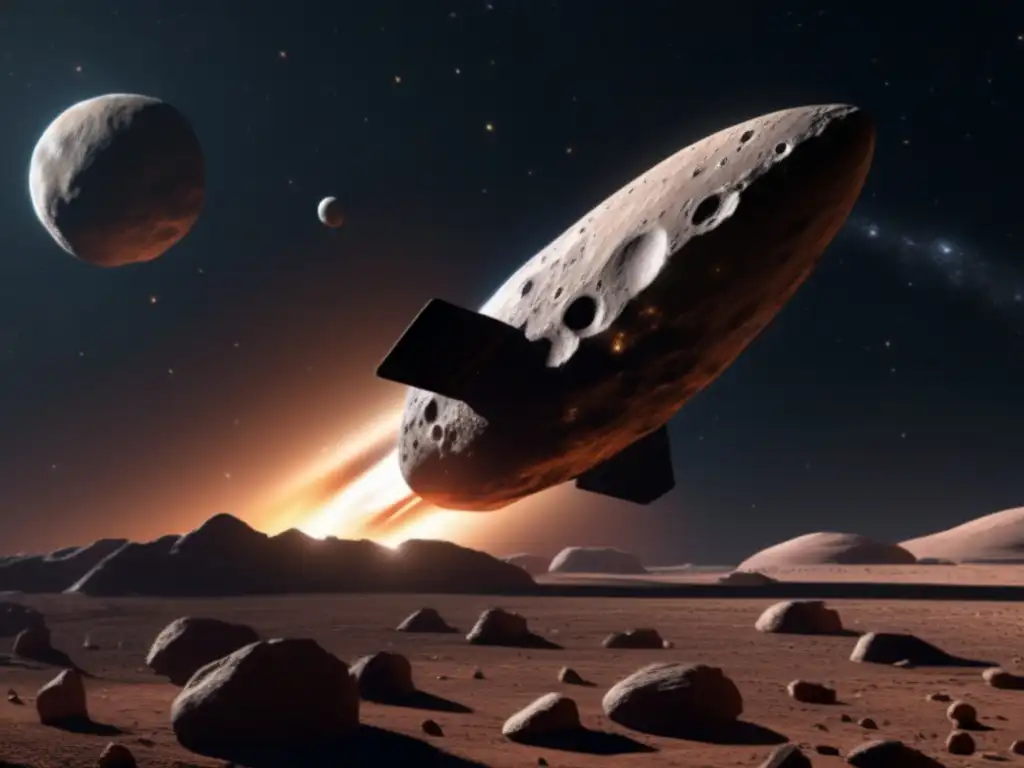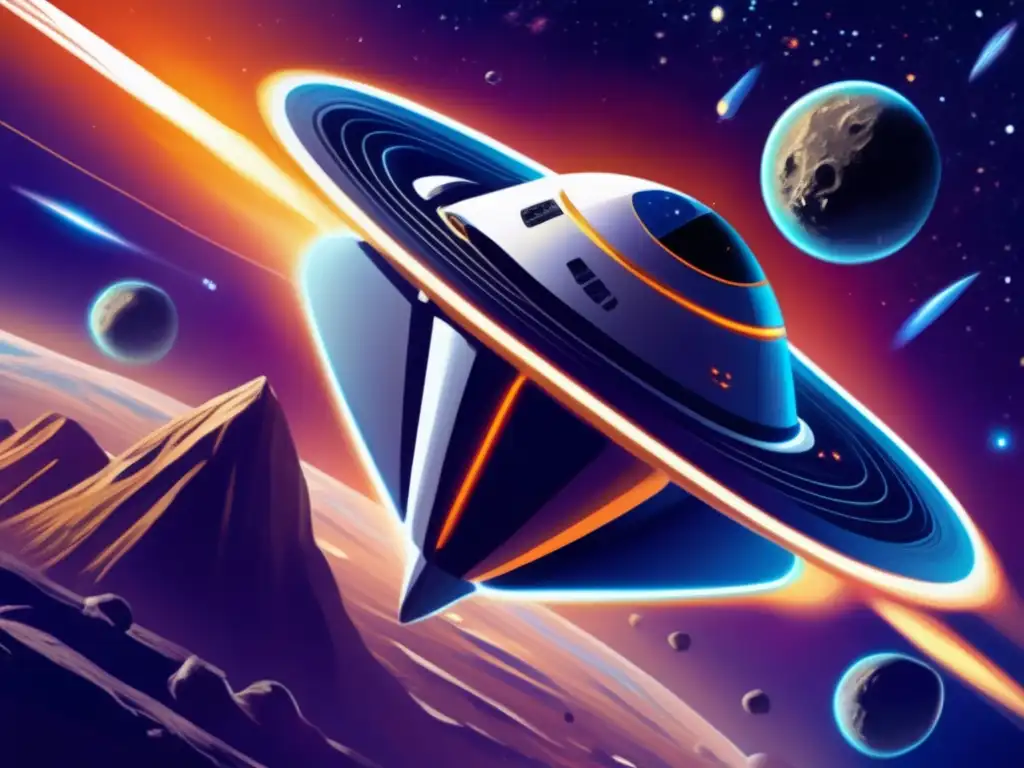2014 MU69: Pushing The Boundaries Of Asteroid Exploration

Introduction
Asteroid exploration has come a long way since the first telescopes were pointed to the sky. With each new mission, we learn more about these celestial objects and their role in the universe. In this article, we will focus on 2014 MU69, a small Kuiper Belt object that was explored by NASA's New Horizons spacecraft in 2019. We will examine why this asteroid is significant, what we learned from the mission, and how it is pushing the boundaries of asteroid exploration.
The Discovery of 2014 MU69

The Kuiper Belt
The Kuiper Belt is a region of the solar system beyond Neptune that contains many small, icy objects. The belt is thought to be the source of many comets that pass through the inner solar system.
Discovery
2014 MU69 was discovered by astronomers using the Hubble Space Telescope in 2014. It was chosen as the next target for the New Horizons spacecraft, which had previously flown by Pluto.
Characteristics
2014 MU69 is a small, rocky object with an estimated diameter of about 31 kilometers. Its reddish color indicates the presence of organic molecules, making it an important target for studying the early solar system.
The New Horizons Mission

The Journey to 2014 MU69
New Horizons was launched in 2006 with the mission of exploring Pluto and its moons. After passing by Pluto in 2015, NASA decided to extend the mission to study other objects in the Kuiper Belt. The spacecraft traveled for over two years to reach 2014 MU69.
Close-up Exploration
In January 2019, New Horizons made its closest approach to 2014 MU69, passing within 3,500 kilometers of the object. The spacecraft took detailed images and collected data about the asteroid's composition, temperature, and size.
Discoveries
The New Horizons mission revealed many surprising facts about 2014 MU69. The asteroid is a contact binary, meaning it was formed from two smaller objects that merged together. It also has a unique "pancake" shape that surprised scientists. The data collected by New Horizons allowed scientists to better understand the formation and evolution of objects in the Kuiper Belt.
Implications for Asteroid Exploration

Advancements in Technology
The success of the New Horizons mission to 2014 MU69 demonstrated the capabilities of current spacecraft and technology. The mission showed that we can explore small, distant objects with great accuracy and detail.
Potential for Future Missions
The discoveries made by New Horizons have also opened up new possibilities for future asteroid missions. Scientists are now more interested in studying other small Kuiper Belt objects, which could provide insights into the early solar system and the origins of life on Earth.
New Questions to Explore
The mission to 2014 MU69 has also raised new questions about asteroid formation and evolution. The discovery of the asteroid's unique shape and formation has challenged previous assumptions about how these objects are created and changed over time.
Frequently Asked Questions

-
What is 2014 MU69?
2014 MU69 is a small asteroid in the Kuiper Belt that was explored by NASA's New Horizons spacecraft in 2019.
-
Why is 2014 MU69 significant?
2014 MU69 is significant because it is one of the most distant and small objects ever explored by a spacecraft. The mission to the asteroid provided new insights into the formation and evolution of the early solar system.
-
What did we learn from the New Horizons mission to 2014 MU69?
The New Horizons mission revealed that 2014 MU69 is a contact binary with a unique "pancake" shape that challenges previous assumptions about asteroid formation. The asteroid's composition also contains organic molecules, which could provide clues about the origins of life on Earth.
-
What are the implications of the New Horizons mission for future asteroid exploration?
The mission to 2014 MU69 demonstrated the capabilities of current spacecraft and technology for exploring small, distant objects. The success of the mission has opened up new possibilities for studying other objects in the Kuiper Belt and understanding the early solar system.
-
What new questions were raised by the New Horizons mission to 2014 MU69?
The mission to 2014 MU69 challenged previous assumptions about asteroid formation and evolution. The discovery of the asteroid's unique shape and formation has raised new questions about how these objects are created and changed over time.
Conclusion
The New Horizons mission to 2014 MU69 represents a significant milestone in asteroid exploration. The success of the mission demonstrated the capabilities of current technology and opened up new possibilities for studying small, distant objects in the Kuiper Belt. The discoveries made by the mission have challenged previous assumptions about asteroid formation and evolution, and raised new questions about the origins of our solar system. As we continue to explore and study asteroids, we can look forward to uncovering even more secrets and surprises about the universe around us.
Additional Resources

For more information about asteroid exploration, visit the NASA website at www.nasa.gov/mission_pages/asteroids/main/index.html.
 The Unearthing Of Toutatis: A Potentially Hazardous Asteroid
The Unearthing Of Toutatis: A Potentially Hazardous Asteroid Galileo’s Encounter: Unveiling The Secrets Of Gaspra And Ida
Galileo’s Encounter: Unveiling The Secrets Of Gaspra And Ida The Breakthrough Discovery Of Asteroid Terrestrial-impact Last Alert System (ATLAS)
The Breakthrough Discovery Of Asteroid Terrestrial-impact Last Alert System (ATLAS)If you want to discover more articles similar to 2014 MU69: Pushing The Boundaries Of Asteroid Exploration, you can visit the Asteroid Discoveries category.
Leave a Reply

Articulos relacionados: